The Asian Leopard Cat (Prionailurus bengalensis) stands out as one of the most fascinating small wild cats in the world. This elusive feline roams the forests, grasslands, and wetlands of Asia, thriving in diverse environments across countries like China, India, Thailand, Indonesia, and Japan. With its sleek, spotted coat and striking eyes, it bears a resemblance to a miniature leopard, which makes it both captivating and mysterious.
Beyond its wild nature, the Asian Leopard Cat has played a crucial role in the domestication world. Breeders used it to create the Bengal cat, a popular domestic breed known for its exotic appearance and energetic personality. This connection has sparked interest among cat enthusiasts, but the Asian Leopard Cat remains a true wild species with instincts and behaviors that set it apart from domesticated felines.
In this blog post, you will discover ten incredible facts about the Asian Leopard Cat that will leave you amazed. From its nocturnal hunting skills to the challenges it faces in the wild, we will explore what makes this wild feline so unique.
The Asian Leopard Cat: A Unique Small Wild Cat
Scientific Classification and Physical Description
The Asian Leopard Cat (Prionailurus bengalensis) belongs to the Felidae family, which includes all wild and domestic cats. It falls under the Prionailurus genus, a group of small wild cats native to Asia. Scientists recognize several subspecies of the Asian Leopard Cat, each adapted to different regions across its vast range.
This wild feline typically measures between 35 to 60 cm (14 to 24 inches) in body length, with an additional tail length of 25 to 40 cm (10 to 16 inches). Most individuals weigh between 1.5 to 7 kg (3 to 15 lbs), making them similar in size to a domestic cat but with a leaner and more muscular build. Males tend to be larger than females, and size variations occur depending on geographical location. In colder regions, such as northern China and Russia, they grow slightly larger and develop thicker fur to withstand harsh winters.
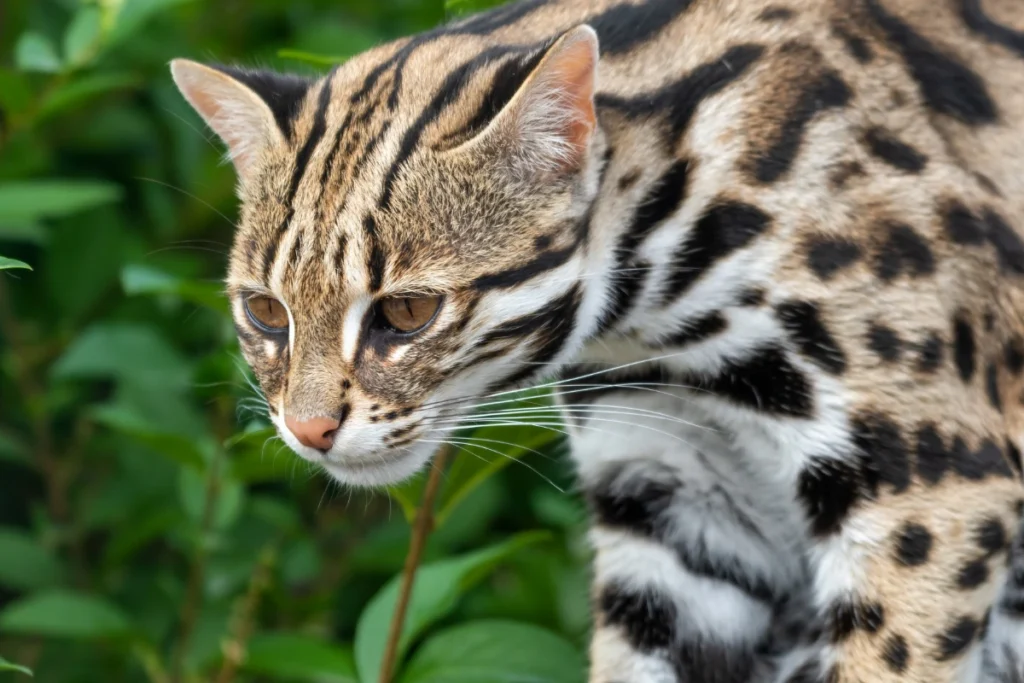
Comparison to Domestic Cats in Terms of Size and Appearance
At first glance, the Asian Leopard Cat might look like a domestic cat, but key differences set them apart. While both share a similar body size, the Asian Leopard Cat has a longer, leaner frame with more pronounced muscle definition. Its legs appear slightly longer in proportion to its body, giving it an agile and athletic appearance.
The head of the Asian Leopard Cat is smaller and more wedge-shaped compared to domestic cats, and it has a narrower muzzle and larger, more rounded ears. These adaptations enhance its hunting abilities, allowing it to detect prey movements with exceptional accuracy. Unlike domestic cats, which have a wide range of coat colors and patterns due to selective breeding, the Asian Leopard Cat always exhibits a distinctive spotted coat pattern that provides camouflage in its natural habitat.
Distinctive Features Like Spotted Coat and Large Eyes
The Asian Leopard Cat’s coat features dark rosettes and solid spots scattered across a golden, tawny, or grayish-brown background. The spots vary in shape and size, with some individuals displaying more defined rosettes similar to those seen on leopards. This natural patterning helps the cat blend into dense vegetation, making it a highly effective ambush predator. The underbelly appears lighter in color, often white or pale cream, with smaller, irregular dark spots.
One of the most striking features of the Asian Leopard Cat is its large, round eyes, which provide excellent night vision. Since this feline primarily hunts at night, its eyes have adapted to gather as much light as possible in low-light conditions. The eye color varies from golden yellow to greenish-gray, depending on the individual and the lighting conditions.
Other distinctive traits include black markings on the face, such as dark stripes running from the eyes to the back of the head, and small white patches near the eyes and on the ears, which enhance its ability to communicate visually with other cats. Its tail, which features dark rings and a black tip, plays a crucial role in maintaining balance while navigating trees and rocky terrain.
These unique physical characteristics allow the Asian Leopard Cat to thrive in the wild, setting it apart from domestic cats despite their shared ancestry.
Where Does the Asian Leopard Cat Live?
Native Habitats
The Asian Leopard Cat thrives in a wide range of natural habitats across Asia. It prefers dense forests, tropical rainforests, grasslands, and wetlands, where it can find ample cover and prey. These cats often settle near water sources like rivers, swamps, and mangroves, as these environments provide both hydration and abundant hunting opportunities. Unlike some wild cats that stick to a specific habitat, the Asian Leopard Cat displays remarkable adaptability, allowing it to survive in different ecosystems, from lowland jungles to mountainous regions.
In colder climates, such as northern China, Russia, and the Himalayan foothills, individuals develop thicker fur to withstand freezing temperatures. In contrast, those living in tropical regions like Indonesia, Malaysia, and southern India have shorter, sleeker coats that help them stay cool. Their ability to navigate diverse landscapes makes them one of the most widespread small wild cats in Asia.
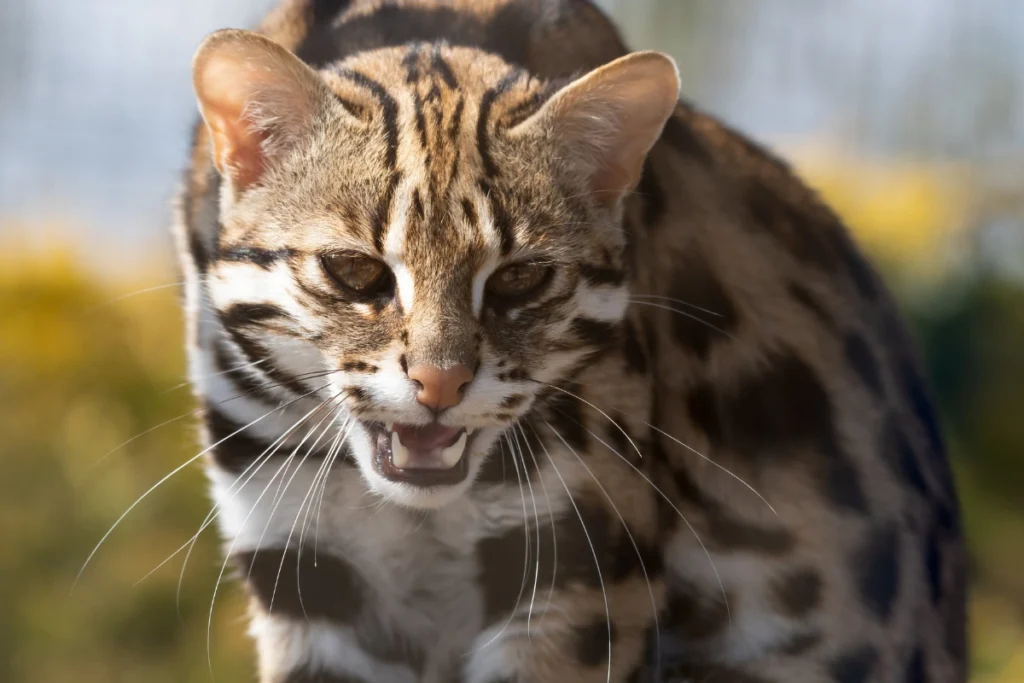
Countries Where The Asian Leopard Cat is Found
Asian Leopard Cats inhabit a vast geographical range that spans multiple countries. They can be found in China, India, Thailand, Indonesia, Japan, Vietnam, Nepal, Myanmar, the Philippines, Taiwan, and parts of Russia. The populations in these regions vary, with some areas supporting stable numbers while others face serious threats from habitat loss and human activities.
In Japan, these cats exist only on the Iriomote and Tsushima Islands, where they hold a special conservation status due to their declining numbers. In Indonesia and the Philippines, they are more commonly found in forested regions but remain vulnerable to deforestation and illegal pet trade. Across their range, these wild felines continue to adapt to changing environments, but some populations struggle due to increasing human encroachment.
Adaptability to Different Environments, Including Human Proximity
The Asian Leopard Cat’s adaptability extends beyond its ability to live in various natural habitats. Unlike many wild felines that avoid human settlements, this species has shown a surprising tolerance for human presence. In some areas, it lives near farmlands, plantations, and even rural villages, where it hunts rodents, helping control pest populations. Farmers in some regions appreciate its role in natural pest control, but conflicts arise when these cats prey on poultry or other small livestock.
In regions where deforestation has reduced its natural habitat, the Asian Leopard Cat sometimes moves into secondary forests, abandoned agricultural lands, or even suburban green spaces. However, proximity to humans increases its risk of encountering threats such as poaching, road accidents, and capture for the illegal pet trade. Some individuals get caught in traps meant for other animals, while others become victims of wildlife trafficking due to their exotic appearance.
Despite these challenges, the Asian Leopard Cat remains one of the most resilient wild cat species, constantly adapting to human-altered landscapes. Conservation efforts aim to ensure that as human populations expand, these fascinating felines continue to find safe spaces to thrive.
A Skilled Nocturnal Hunter and Solitary Predator
Nocturnal Behavior and Hunting Techniques
The Asian Leopard Cat thrives as a nocturnal predator, staying active primarily during the night. As soon as the sun sets, it begins moving through its territory, using its exceptional night vision and acute hearing to detect prey. Unlike many wild cats that rely heavily on speed, this feline prefers a stealth-based hunting approach. It moves silently through dense vegetation, using its camouflaged coat to remain nearly invisible.
Once it spots a target, the Asian Leopard Cat relies on patience and precision. It slowly creeps forward, keeping its body low to the ground, then launches a sudden, well-timed attack. A powerful leap and quick reflexes allow it to ambush small mammals, birds, and reptiles before they have a chance to escape. When hunting in trees, it moves with agility, using its long tail for balance and its sharp claws for grip. In open areas, it employs short bursts of speed to chase down fast-moving prey like rodents and birds.
Unlike domestic cats, which sometimes toy with their food, the Asian Leopard Cat kills swiftly, ensuring its meal doesn’t escape. After securing its catch, it often moves to a safer, hidden location before eating, reducing the risk of attracting larger predators.
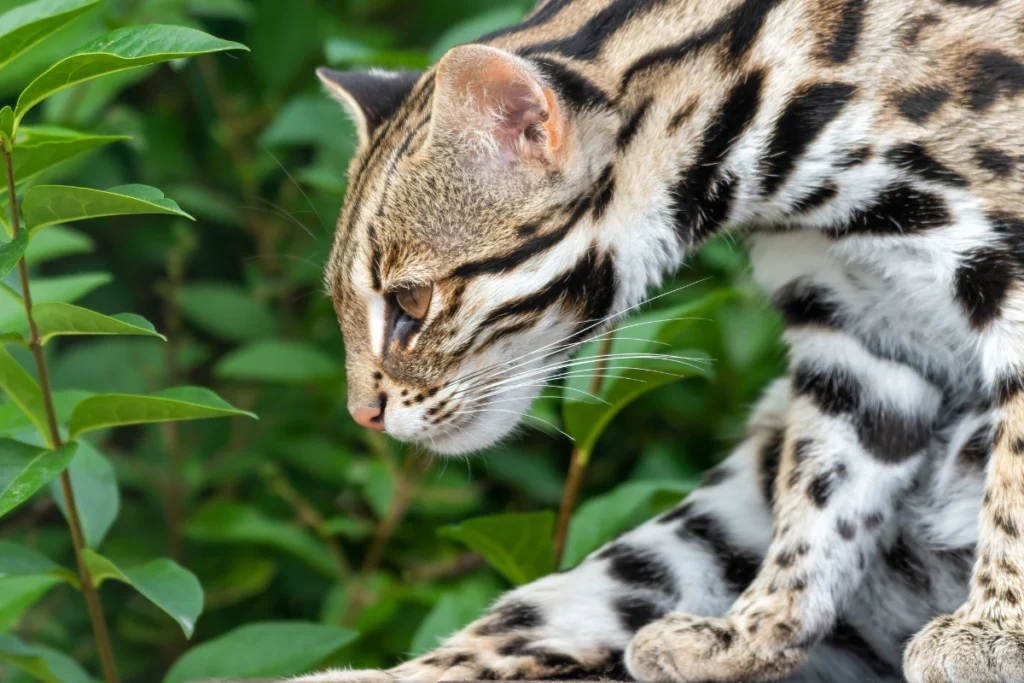
Diet
The Asian Leopard Cat follows a carnivorous diet, feeding on a variety of small animals. It primarily preys on rodents, birds, reptiles, amphibians, and insects, but its diet shifts depending on the availability of food in its environment. In some regions, it hunts larger prey such as hares or small deer fawns, while in coastal areas, it may consume fish and crustaceans.
Opportunistic in nature, this wild feline takes advantage of whatever food sources exist in its habitat. It often hunts rats and mice, making it a natural pest controller in farmlands and plantations. In tropical forests, it preys on frogs, lizards, and bats, while in colder regions, it may focus on ground-dwelling birds and small mammals. Unlike some big cats that rely on scavenging, the Asian Leopard Cat prefers fresh kills, rarely eating carrion.
Water does not deter this feline from hunting. Unlike many domestic cats that avoid getting wet, the Asian Leopard Cat wades through shallow water to catch fish or amphibians. This adaptability allows it to survive in various ecosystems, from rainforests to riverbanks.
Role in Controlling Prey Populations and Maintaining Ecosystem Balance
The Asian Leopard Cat plays a vital role in maintaining ecological balance by keeping prey populations in check. As a natural predator of rodents, it helps prevent the overpopulation of species that can damage crops and spread diseases. Farmers in some areas unknowingly benefit from its presence, as these cats reduce the number of pests without the need for chemical pesticides.
By preying on birds, reptiles, and insects, the Asian Leopard Cat regulates the food chain and contributes to a stable ecosystem. Without its presence, certain prey species could multiply unchecked, leading to habitat degradation and competition among animals for food. This wild cat also indirectly supports vegetation health, as its predation on herbivorous rodents helps prevent excessive plant consumption.
Despite its ecological importance, human activities continue to disrupt its natural role. Deforestation, urban expansion, and hunting threaten its population, which could lead to imbalances in local ecosystems. Conservation efforts focus on protecting this species to ensure it continues fulfilling its role as a key predator in the wild.
By understanding the hunting techniques, diet, and ecological impact of the Asian Leopard Cat, we can appreciate its significance beyond its striking appearance. This elusive feline is not just a beautiful creature—it’s an essential part of the natural world.
The Asian Leopard Cat and the Bengal Cat Connection
How the Asian Leopard Cat Contributed to the Bengal Cat Breed
The Asian Leopard Cat played a key role in the creation of the Bengal cat, one of the most popular hybrid domestic cat breeds today. Breeders valued the Asian Leopard Cat for its exotic appearance, wild ancestry, and resilient nature. With its beautifully spotted coat, athletic build, and sharp hunting instincts, it became the foundation for a new breed that combined wild beauty with domestic temperament.
The first known attempts to cross the Asian Leopard Cat with domestic cats occurred in the early 1960s. A geneticist named Jean Mill led this effort in the United States, hoping to create a cat that looked wild but possessed a friendly and social personality suitable for home life. Breeders continued refining the breed over the years, selecting for desirable traits like the rosette patterns, muscular build, and affectionate temperament now associated with Bengal cats.
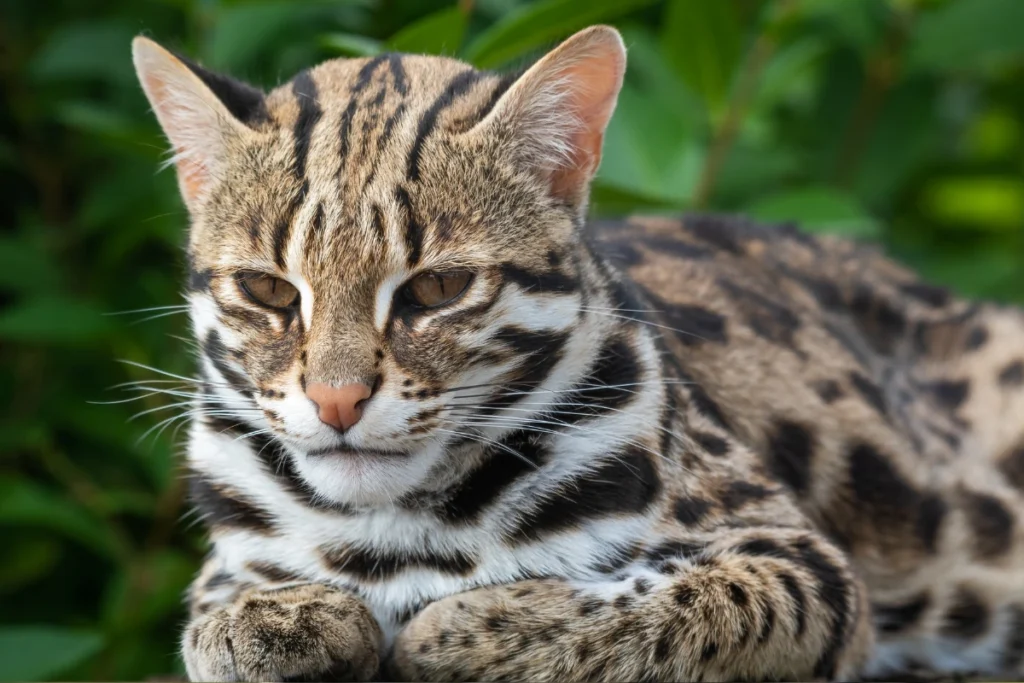
Hybridization with Domestic Cats to Create the Bengal Breed
Breeding programs started by mating female Asian Leopard Cats with male domestic cats, primarily short-haired breeds like the Egyptian Mau. The first-generation hybrids, known as F1 Bengals, displayed a mix of wild and domestic traits. They often inherited the Asian Leopard Cat’s stunning coat pattern and hunting instincts but retained a more independent and wary temperament.
To make the breed more suitable as a pet, breeders selectively bred these hybrids with domestic cats over multiple generations. By the fourth or fifth generation (F4 and beyond), Bengal cats became fully domesticated while still maintaining the exotic appearance of their wild ancestors. The Bengal breed officially gained recognition from major cat associations in the 1980s and 1990s, quickly rising in popularity due to its leopard-like markings, high energy levels, and affectionate nature.
The hybridization process preserved many of the Asian Leopard Cat’s physical characteristics, including:
- Golden or silver coats with rosette spots or marbled patterns
- Sleek, muscular bodies built for agility
- Large, expressive eyes suited for low-light vision
However, breeders worked to ensure that Bengal cats developed a more social and interactive temperament, making them a suitable fit for homes.
Differences Between Pure Wild Asian Leopard Cats and Bengal Cats
Although Bengal cats and Asian Leopard Cats share physical similarities, key differences set them apart in behavior, temperament, and adaptability.
- Temperament and Socialization
- The Asian Leopard Cat remains a true wild animal, showing strong territorial instincts and a preference for solitude. It avoids human interaction and reacts with caution or aggression when approached.
- Bengal cats, on the other hand, are highly social, playful, and affectionate. Breeders selectively bred them to enjoy human companionship, making them far more interactive than their wild ancestors.
- Domestication and Training
- The Asian Leopard Cat does not adjust well to living in a home or confined space. It prefers large, natural territories where it can hunt and roam freely. Attempts to keep them as pets often lead to stress, aggression, and escape attempts.
- Bengal cats thrive in domestic environments, adapting well to indoor life. They enjoy playing with toys, interacting with people, and even learning tricks, making them an ideal companion for cat lovers.
- Dietary Needs and Hunting Instincts
- The Asian Leopard Cat follows a strict carnivorous diet, hunting small mammals, birds, and reptiles. It requires a varied raw diet to maintain its health.
- Bengal cats, though they retain some hunting instincts, eat a typical domestic cat diet consisting of commercial cat food, raw meat, or specially prepared meals. They may still display stalking and pouncing behavior, but they no longer rely on hunting for survival.
- Legal and Ethical Considerations
- Many countries prohibit or regulate the ownership of pure Asian Leopard Cats due to their wild nature. Capturing and selling them for the exotic pet trade contributes to conservation concerns.
- Bengal cats, as fully domesticated hybrids, are legal in most places. However, some regions restrict early-generation Bengals (F1-F3) because they still retain strong wild instincts.
Conservation Challenges: Threats to Their Survival
Current Conservation Status
The Asian Leopard Cat (Prionailurus bengalensis) holds a “Least Concern” conservation status according to the International Union for Conservation of Nature (IUCN) Red List. This classification means that, compared to other endangered wild cat species, the Asian Leopard Cat still maintains stable populations across much of its range. However, this does not mean the species faces no danger.
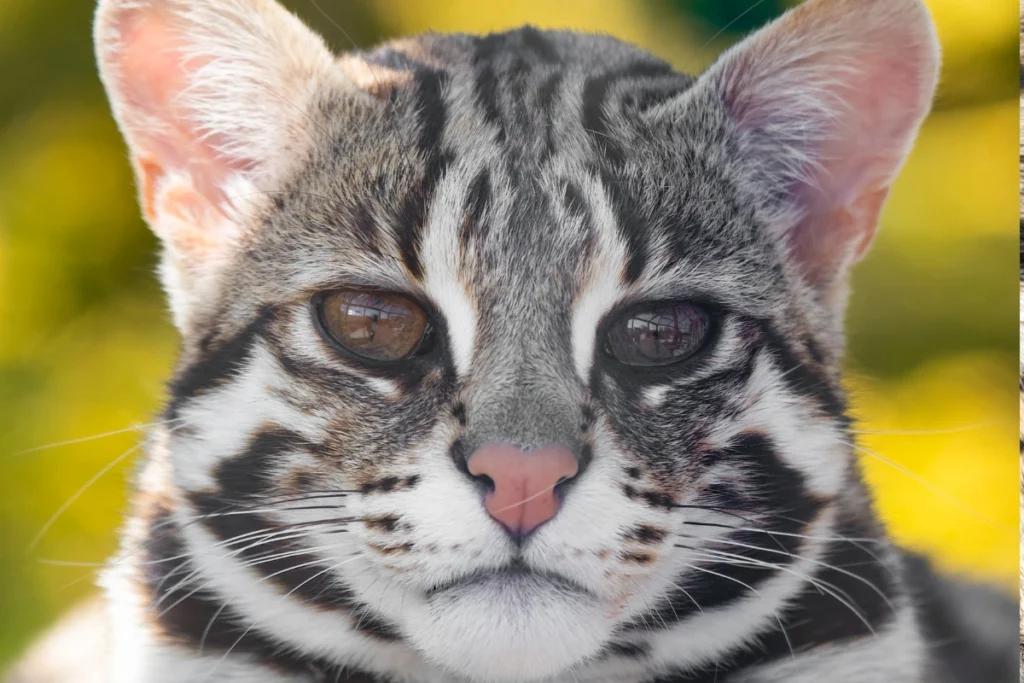
In some regions, populations continue to decline due to habitat destruction, poaching, and illegal pet trade. Certain subspecies, such as the Iriomote cat in Japan, remain critically endangered, with fewer than 250 individuals left in the wild. Conservationists closely monitor populations in areas where deforestation and human encroachment have reduced their natural habitats.
Asian Leopard Cat’s Major Threats
Several human-driven factors threaten the survival of the Asian Leopard Cat in the wild. While some populations remain stable, others struggle due to increasing environmental pressures. The most significant threats include:
- Habitat Loss and Deforestation
- Expanding urban areas, agriculture, and logging industries continue to destroy forests and wetlands where Asian Leopard Cats live.
- In regions like Southeast Asia and China, rapid deforestation forces these cats to move into secondary forests or human-dominated landscapes, increasing their risk of conflicts with people.
- Illegal Wildlife Trade and Poaching
- The demand for exotic pets has led to the capture and sale of wild Asian Leopard Cats, especially in China, Southeast Asia, and parts of Russia.
- In some countries, hunters target these cats for their beautiful spotted pelts, used in the fur trade.
- Conflict with Farmers and Poisons
- As natural prey populations decline in some areas, Asian Leopard Cats sometimes raid poultry farms. Farmers often kill them in retaliation or set traps that injure or kill these wild felines.
- The widespread use of pesticides and rodenticides also affects their survival, as they consume poisoned rodents or prey, leading to secondary poisoning.
- Road Accidents and Human Disturbance
- In regions where forests and roads intersect, many Asian Leopard Cats fall victim to vehicle collisions.
- Increased human activity in forests, including hunting, tourism, and infrastructure development, disrupts their natural behavior and forces them into smaller, fragmented habitats.
Efforts in Wildlife Conservation to Protect the Species
Conservationists and wildlife organizations continue working to protect Asian Leopard Cats through various initiatives. These efforts focus on habitat conservation, anti-poaching measures, and raising public awareness to ensure the species thrives in the wild.
- Protected Areas and National Parks
- Governments in China, India, Thailand, Japan, and Indonesia have established wildlife reserves and protected forests where Asian Leopard Cats can live without major threats.
- National parks such as Borneo’s Kinabalu Park and Thailand’s Khao Yai National Park serve as safe habitats for these cats, preventing habitat destruction and hunting.
- Stricter Laws and Anti-Poaching Initiatives
- Many countries have banned the hunting and trade of Asian Leopard Cats. Some regions strictly enforce laws against capturing and selling these wild felines as exotic pets.
- Conservation groups work with law enforcement agencies to stop illegal wildlife trade, rescuing cats from smugglers and rehabilitating them for release back into the wild.
- Community Awareness and Sustainable Farming Programs
- Educating local communities about the importance of Asian Leopard Cats in ecosystems helps reduce conflicts between farmers and these wild felines.
- In some regions, conservationists promote eco-friendly pest control methods to reduce the need for rodenticides, ensuring these cats have a safe food supply without the risk of poisoning.
- Wildlife Corridors and Habitat Restoration
- Efforts to restore degraded forests and connect fragmented habitats help maintain healthy Asian Leopard Cat populations.
- Wildlife corridors, such as those developed in India and Malaysia, allow these cats to move between different forested areas, preventing genetic isolation and increasing survival chances.
Conclusion
The Asian Leopard Cat stands out as one of the most fascinating wild felines, combining agility, intelligence, and adaptability. From its role as a skilled nocturnal hunter to its influence on the domesticated Bengal cat, this species plays a crucial part in maintaining ecological balance. As a predator, it helps control rodent and small prey populations, preventing overpopulation and protecting local ecosystems. Its presence across diverse environments—from dense tropical rainforests to mountainous regions—demonstrates its remarkable ability to survive in a constantly changing world.
Despite being classified as “Least Concern” by the IUCN, the Asian Leopard Cat faces growing challenges. Deforestation, habitat destruction, illegal pet trade, and human-wildlife conflict threaten populations in various regions. Some subspecies, like the Iriomote cat in Japan, already teeter on the brink of endangerment, highlighting the urgent need for conservation efforts.
Thankfully, conservation programs, protected wildlife reserves, stricter anti-poaching laws, and educational initiatives offer hope for the species’ future. Organizations and governments work to preserve its natural habitat, combat illegal trade, and promote coexistence between these cats and human communities.
By raising awareness and supporting wildlife conservation efforts, individuals can help protect the Asian Leopard Cat and ensure that future generations continue to admire this incredible species in the wild. This feline is more than just an ancestor of the Bengal cat or an exotic wild predator—it represents the rich biodiversity of Asia and the importance of preserving natural habitats for all species that call them home.
Learn About More Cats and Breeds From Here!
You Can Find Good stuff for your Furry Pet on Pet MD Official
